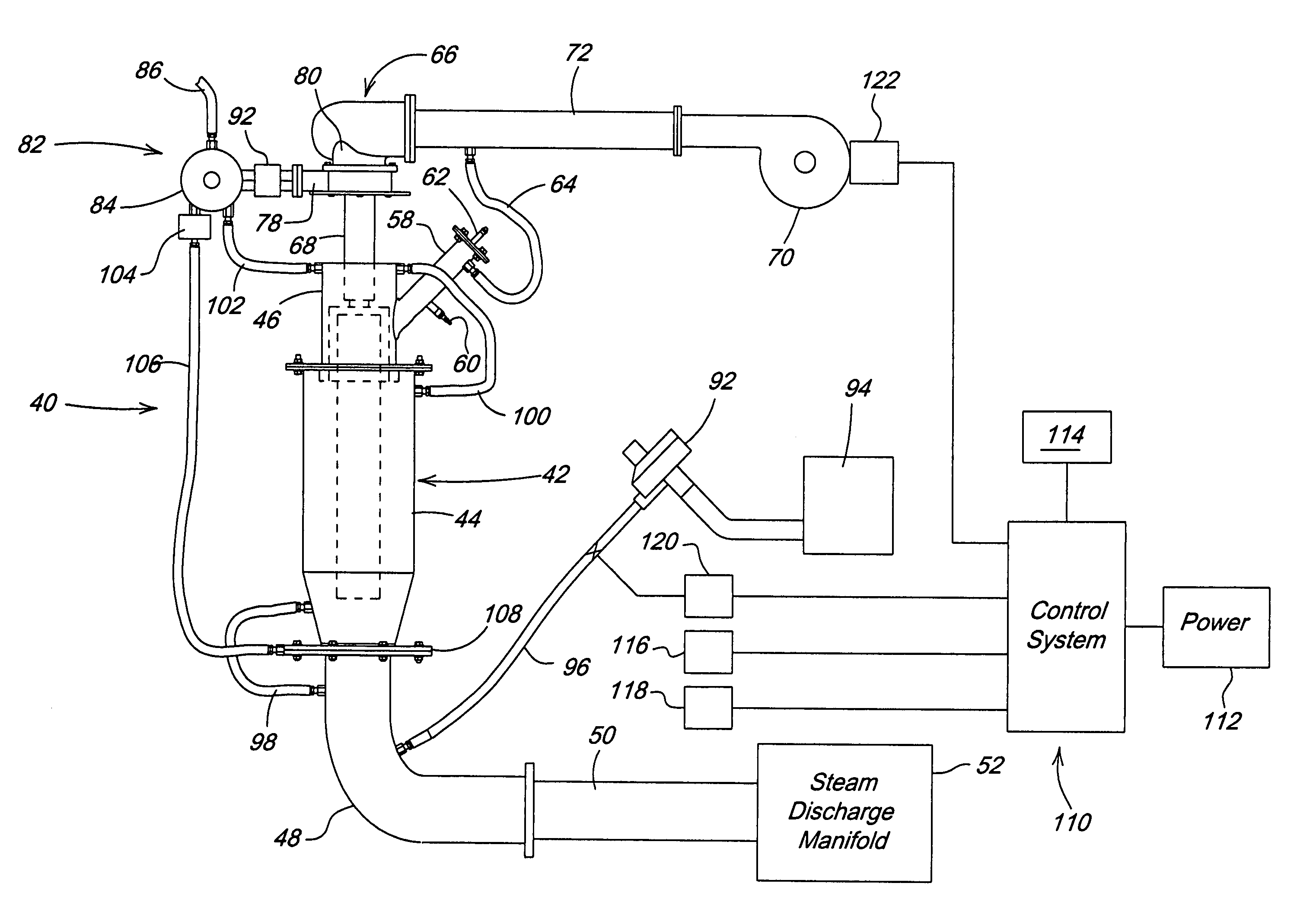Method for re-hydrating dry crop with steam during the baling process
a technology of rehydrating dry crops and baling, which is applied in baling, agriculture, agricultural tools and machines, etc., can solve the problems of lack of accurate measurement of small amount, lack of reliable method of determining steam application rate, and poor internal crop quality, so as to avoid deterioration of green color, reduce the effect of steam application ra
- Summary
- Abstract
- Description
- Claims
- Application Information
AI Technical Summary
Benefits of technology
Problems solved by technology
Method used
Image
Examples
Embodiment Construction
[0016]Referring now to FIG. 1, there is shown a large square baler 10 including a main frame (not visible) supported on a set of tandem wheels 12 for being towed across the ground by a tractor (not shown) coupled to the forward end of a draft frame (not shown) joined to, and extending forwardly from a cross beam structure 14 forming a forward end of the main frame. Suspended from a forward location of the main frame is a crop gathering pick-up 16 having a tined reel operable for elevating a windrow of crop and delivering it to a pair of stub augers 18 (only one visible) operable for narrowing the stream of crop for being fed, by a packer fork assembly 20 into an inlet of a pre-compression chamber 22 which is curved upwardly and to the rear. The pre-compression chamber 22 defines an outlet at its upper end which registers with an inlet provided at a bottom wall of a fore-and-aft extending baling chamber 24. A stuffer fork 26 is selectively operable for moving charges of pre-compresse...
PUM
 Login to View More
Login to View More Abstract
Description
Claims
Application Information
 Login to View More
Login to View More - R&D
- Intellectual Property
- Life Sciences
- Materials
- Tech Scout
- Unparalleled Data Quality
- Higher Quality Content
- 60% Fewer Hallucinations
Browse by: Latest US Patents, China's latest patents, Technical Efficacy Thesaurus, Application Domain, Technology Topic, Popular Technical Reports.
© 2025 PatSnap. All rights reserved.Legal|Privacy policy|Modern Slavery Act Transparency Statement|Sitemap|About US| Contact US: help@patsnap.com



